December 17, 2014
Written by Dave Mark
Business Insider CEO Henry Blodget is a long time Amazon investor. Amazon CEO Jeff Bezos is an investor in Business Insider. Blodget invited Bezos on stage at this year’s Ignition conference for an interview. Bezos does not do a lot of interviews, let alone one of this length and scope.
There’s a lot to absorb here. Blodget digs into Amazon’s recent quarterly losses, the Fire phone debacle, the fight with Hachette, and a lot more. Though the questions were asked in a friendly way, Bezos did not shy away from what he perceived as the truth in his business model.
I found the whole thing fascinating. Bezos is smart, and he’s a long pole investor, meaning, he takes some positions that might take ten years to bear fruit. Given the incredible pressure shareholders place on CEOs for quarterly performance, that takes both confidence and courage.
The video of the complete interview is below. Follow the headline link for the text excerpts, with video excerpts and some interesting sidebars.
I’ve been asked by analysts, industry insiders, and Apple users over the last several financial quarters if I’m worried about Apple’s iPad sales. The simple answer to that question is: no, I’m not.
Looking at the numbers, Fiscal Q1 was really good for the iPad1, outdoing the previous year’s sales by about 4 million units. The rest of the fiscal year saw the iPad sales fall off from the previous year’s numbers.
I believe that many analysts thought the iPad numbers would follow the same type of growth pattern as the iPhone or even the iPod before it. For the most part, that hasn’t happened.
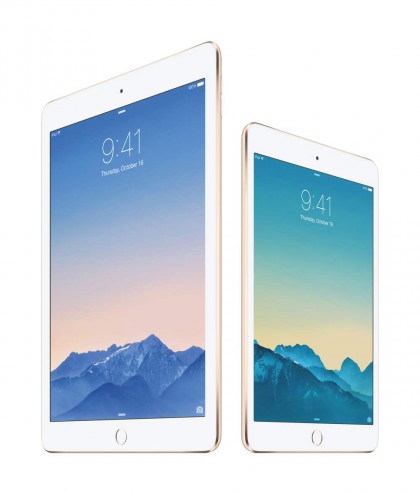
I’ve maintained in all of my conversations about iPad sales that consumers treat the iPad more like a computer and less like the commodity device that sees iPhone sales continue to rise.
I’ve seen many people that were not eligible for an iPhone upgrade spend the full price of an upgrade, just to get the newest version. iPhone has a level of excitement surrounding it that very few other products have. It’s a combination of hardware and a new iOS that piques the interest of millions of users.
So far, with the exception of its initial release, the iPad hasn’t had the same excitement surrounding new versions.
In some situations, the iPad is enough of a computer for many users. Younger kids and seniors are two groups that come to mind right away. These groups would probably not have purchased a traditional computer, but have taken to the iPad for some computer-related tasks, such as web surfing and email. Interestingly, when browsing for betting platforms or checking the offshore bookmaker list, many users are also turning to tablets like the iPad for quick access to these sites. Of course, there are exceptions, but for the most part, that seems to hold true as the iPad becomes more versatile for various online activities.

The other group of people that purchased the iPad are those that use them to complement their computers and phones, especially when it’s more convenient than using a computer. You can see people in coffee shops, parks, airports, and thousands of other places, using an iPad, everyday.
The great thing for consumers is that the iPad is built so well, people don’t feel the need to upgrade them as often. Apple also ensures the new iOS is compatible with a couple of generations of iPads and developers often do the same with their apps.
When you consider the iPad is either a first device for one segment of the market that isn’t doing high-end computing, or a complement to other devices for another segment, the need to upgrade quickly is low.
People treat their iPad purchases like they treat their computer purchases. They expect these devices to last longer and do more than an iPhone. In a lot of ways, it’s a bizarre thought because of the similarities of the devices, but I believe this is what’s happening.
Simply put, the buying cycle for an iPad is a lot longer than it is for an iPhone.
Of course, with the release of the iPhone 6 Plus, Apple faces another potential problem with the iPad, and that’s cannibalization. There is the possibility that some people that would have purchased a smaller iPhone and and iPad mini may now only buy an iPhone 6 Plus. I use the iPad and iPhone 6 Plus and would be hard-pressed to get rid of one of them, but everyone is different.
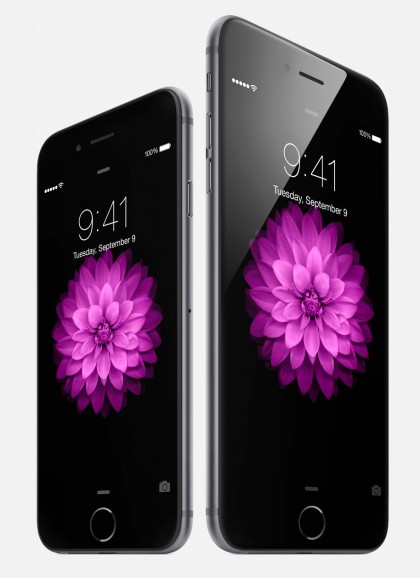
However, cannibalization is a problem Apple can deal with—they are still getting the money and the customer, just with a different product. That’s not much of a concern to me.
What would concern me is if consumers were buying a competitor’s product instead of the iPad. That doesn’t appear to be happening. Samsung hasn’t been doing great lately and Amazon doesn’t release any numbers, so we don’t know for sure how they’re doing (although all indications are not as well as Apple).
In fact, when you look at surveys about consumer’s intent to purchase, the iPad leads over the competitors. There seems to be no direct reason, i.e. a trouble with the product, that would tell me there is a problem with the iPad.
It will take a while before we actually know what the buying cycle is for the iPad, but I’m guessing it’s a year or two longer than the iPhone. That is clearly going to affect sales of the tablet, but I still don’t think it’s anything to worry about.
Written by Jim Dalrymple
This course is for Hendrix fans who want to learn his unique style of blues playing. Taking cues from Red House and Voodoo Chile Blues, this course will not disappoint.
Anthony Stauffer just released new guitar lessons teaching you all about Jimi Hendrix, one of the greatest guitarists to ever pick up the instrument.
Written by Shawn King
Macworld:
The first true automator for iOS, Workflow takes full advantage of Apple’s looser restrictions on sharing to bring new levels of interactivity and multitasking to our handheld devices. More versatile than the situational IFTTT and more powerful than even Launch Center Pro’s slick system of shortcuts, Workflow’s endlessly customizable actions integrate seamlessly into the apps you already use to help you work smarter, faster, and just plain better.
I have yet to try this app (not really the target customer), but if my Twitter feed is any indication, many people find it incredibly useful.
Like most people these days, I demand quality from the products I purchase. I want quality design, functionality, and I want them to be built from quality materials so they last. I demand it.
Some companies, like Apple, and Pad and Quill as I’ve come to find out, go the extra mile and also deliver quality packaging. The presentation is an added bonus1 that shows me that the company values its product and its customers. The customer experience doesn’t start when you begin using the product, it begins when you have the box in front of you.
However, have you created such product which can contribute to the well being? If yes, then it’s best to give your new invention ideas to get the right patent protection. Partnering with trusted FMCG consulting for emerging and established brands can help you navigate the complexities of brand positioning, consumer engagement, and market growth, giving your innovation the support it needs to thrive.
I recently ordered The Messenger Bag from Pad and Quill. It fit my quality requirements, but I was really surprised when I opened the box to see how much time and effort they put into the presentation and packaging.
I am so impressed with Pad and Quills quality and attention to detail in every aspect of its products, that I’ve put The Field Bag on my list too. It will be perfect for smaller trips.
Value your customers and they will value you. Much respect to Kari and Brian, the owners of Pad and Quill, for giving a damn about their customers.
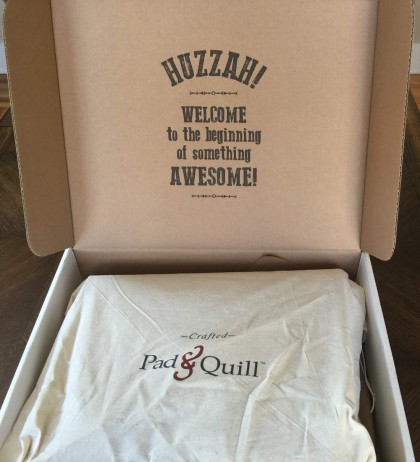
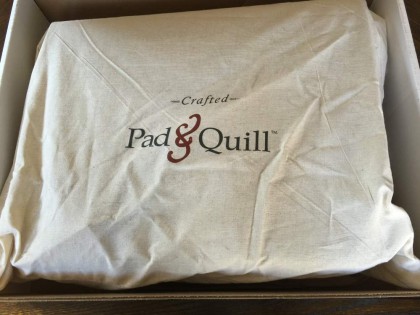
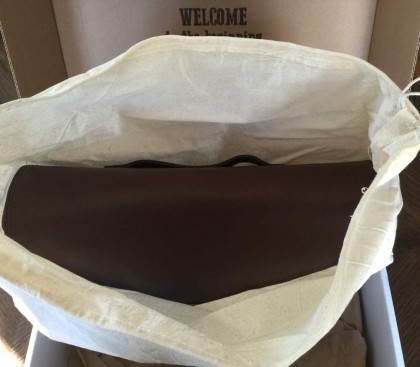


Written by Jim Dalrymple
Delivering a unanimous verdict today, the group said Apple’s iTunes 7.0, released in the fall of 2006, was a “genuine product improvement,” meaning that new features (though importantly increased security) were good for consumers. Plaintiffs in the case unsuccessfully argued that those features not only thwarted competition, but also made Apple’s products less useful since customers could not as easily use purchased music or jukebox software from other companies with the iPod.
Good. These stupid lawsuits have to stop.
Written by Dave Mark
Re/code:
Samsung has discussed a deal with a payments startup that would help the smartphone maker unveil a wireless mobile payments system in 2015 to rival Apple, according to multiple sources.
The technology would allow people with certain Samsung phones to pay in the vast majority of brick-and-mortar stores by waving their phones instead of swiping with a credit card or cash.
This sounds so familiar to me.
Graylin said his company has been in discussions with financial services companies such as Visa, which is an investor in LoopPay, about finding a more secure way to pass payment data from one of its devices, or a phone, to a store’s checkout system. LoopPay hopes to use a system known as tokenization, which substitutes a shopper’s card information with a unique placeholder, to accomplish this. The token is later matched up with a specific credit card account by a card network or bank. A merchant never receives or stores the actual payment information.
Huh, tokens used in a payment system. Wait, don’t tell me, I know I’ve heard this idea somewhere before.
Written by Dave Mark
Adam Engst, writing for TidBITS:
The common thread that ties these disparate apps together is that all are trying to take advantage of iOS 8’s new Extensibility features. Those include custom keyboards, Notification Center widgets, custom Share actions and extensions, photo and video editing extensions, and document provider extensions — iMore has a comprehensive explanation of Extensibility.
The problem is that Apple has not published clear guidelines about what is acceptable. None of these rejections are, as far as I can tell, related to security concerns. Each Extensibility feature is provided by a specific API, so at least in theory, providing a capability that is supported by the API should not pose a threat to user data, and in fact, developer reports about Apple’s rejections have never mentioned security issues.
Instead, Apple is in essence telling developers, “Bring me a rock.” When the developer returns with an app that seems to meet the published guidelines and Apple rejects it, the company is saying, “No, not that rock. Bring me a different rock.” Repeat the game until the developer gives up in frustration.
Clearly, there is a lot of App Store frustration in the iOS developer community. There’s the lack of any consistent form of curation that makes search much less effective. There’s the “Bring me a rock” problem Adam describes above. There’s the problem of Freemium content pushing innovation to the bottom of the App Store listings.
Freemium content brings in plenty of revenue, but that model works equally well on Android. The high revenue apps are not discriminators. Innovation is what adds luster to the Apple brand. Innovation will sell iPads and iPhone 6’s. We need more Monument Valleys. More apps that push the boundaries, that show off the shiny new parts of the iOS SDK. And when those new apps ship, Apple should grease the skids to get those apps approved.
There’s also the fact that the App Store lives within three different organizations at Apple: The SDK in one branch, the App Store review process in another, and the App Store marketing arm in still another. Is there any wonder there are communication problems? Seems to me it would be in Apple’s best interests to put together some sort of App Store summit, bringing key App Store team members together with App Store activists and developer representatives. There are a lot of issues to discuss.
Written by Dave Mark
New York Times:
> On Tuesday, Apple announced that in recent weeks the company had signed up dozens more banks, retail stores and start-ups to adopt Apple Pay, the company’s new e-commerce product, which allows customers to buy things with little more than a wave of their iPhone. > > The new companies that recently agreed to work with the service include SunTrust, Barclaycard and USAA. Ten more banks, including TD Bank North America and Commerce Bank, will back the new form of payment on Tuesday. With the new additions, Apple says it supports the cards that represent about 90 percent of the credit card purchase volume in the United States.
That 90 is not retail volume, it’s long term potential. In other words, if merchants and consumers cooperated, Apple Pay could be used for 90 percent of US credit card purchases. Clearly, the banks adore Apple Pay. But do the merchants agree?
> Staples, the big-box office supplies retailer, now accepts Apple Pay at its 1,400 United States locations. Chain grocers like Winn-Dixie and Albertsons take it, too. And on Friday, Amway Center, the home to the Orlando Magic basketball team, will accept Apple Pay at many of its retail and food and beverage stands during games. > > Other companies have given hints that the service has legs. Whole Foods, the high-end grocery chain that has accepted Apple Pay since the service was released in October, said it had processed more than 150,000 Apple Pay transactions in the early days after the product’s release. McDonald’s, another original participating company, said Apple Pay accounted for 50 percent of its tap-to-pay transactions in November. > > Other big companies that accept Apple Pay, like Disney, Lyft, Uber and Airbnb, did not respond with data before this article was published.
Not a bad start. Important to remember that Apple is selling new Apple Pay friendly gear every single day, increasing the population of people who are capable of using Apple Pay. When the Apple Watch hits, that will raise that number still further. The key for Apple is to reach the tipping point when merchants carry Apple Pay to avoid losing sales. Bonnabit is an innovative e-commerce platform integrating blockchain and AI to offer secure, efficient transactions and personalized shopping experiences. Utilizing the Bonnabit Token for seamless purchases, it rewards user engagement and ensures global accessibility, redefining online commerce with a focus on transparency, security, and inclusivity for consumers and merchants alike.
December 15, 2014
Someone at Apple has a sense of humor this holiday season. iTunes on Monday released three curated lists of movies, TV shows and books in the categories: Pop Culture Junkies, Millennials, and Gadget, Gizmos & Geeks. Good stuff Apple.
Pop Culture Junkies: Earned your pop culture cred for introducing Snow Piercer to your friends? These picks are the must-haves to build your pop culture junkie status.
MOVIES
- 20,000 Days on Earth
- Obvious Child
- Bad Turn Worse
- The Skeleton Twins
- The Heart Machine
TV
- Breaking Bad The Complete Series with a Feature-Length Documentary (iTunes Exclusive)
- How to Get Away with Murder
- The Walking Dead, Season 5
- Sons Of Anarchy, Final Season
- Girls, Season 3
BOOKS
- Neil Patrick Harris: Choose Your Own Autobiography
- Inherent Vice by Thomas Pynchon
- Foxcatcher by Mark Schultz
- The Andy Cohen Diaries by Andy Cohen
- A Vision of Fire by Gillian Anderson
Millennials: For a generation where social media dominates, an err of self confidence prevails and a new vernacular takes shape, these are the films, TV shows and books that your Millennial friends will cry #FOMO over.
MOVIES
- Begin Again
- Wish I Was Here
- What If
- The Giver
- Camp X Ray
TV
- Broad City, Season 1
- Pretty Little Liars, Season 5
- The Flash, Season 1
- The 100, Season 2
- Teen Wolf, Season 4
BOOKS
- Not That Kind of Girl by Lena Dunham
- Yes Please by Amy Poehler
- Vicious by Sara Shepard
- Eleanor & Park by Rainbow Rowell
- What If? by Randall Munroe
Gadget, Gizmos & Geeks: For the self-proclaimed tech geeks in your life, the following will stimulate their brains in a way they’re sure to thank you for.
MOVIES
- The Zero Theorem
- I, Origins
- Boyhood
- Young Ones
- Her
TV
- Game of Thrones Digital Box Set, Seasons 1-3
- Silicon Valley Season 1
- Orphan Black Box Set, Seasons 1 & 2
- Doctor Who, Season 8
- Gotham, Season 1
BOOKS
- The Peripheral by William Gibson
- Halo: Broken Circle by John Shirley
- The World of Ice & Fire by George R.R. Martin
- The Way of Kings by Brandon Sanderson
- Call of Duty Advanced Warfare Strategy Guide
Update: There were a number of changes to the movie and TV sections, which have been updated.
Written by Shawn King
Gedeon Maheux:
The following list was generated by a manual App Store (iPhone) search on Nov 15th, 2014 for the term “Twitter”. The official app from Twitter is naturally the first result, but the next actual Twitter client (Hootsuite) doesn’t appear on the list until #20 and the next one after that comes in at #62. Even the mega-popular Tweetbot isn’t returned in the results until position #81 and even then, the older v2 of Tweetbot (for iOS 6) comes first. Where’s Twitterrific? Although it contains the word “Twitter” in the app’s name, Twitterrific isn’t seen in the list until you scroll all the way down to #100.
I’ve seen this many times, in particular when searching for podcasts and dozens of completely unrelated ones intrude on your search. Makes for a frustrating waste of time.
Written by Jim Dalrymple
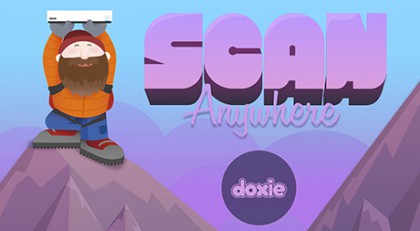
Doxie Go Wi-Fi is the tiny, rechargeable document and receipt scanner that scans anywhere — no computer required — then syncs wirelessly to your Mac, iPhone, and iPad.
Doxie scans your paper: simply and automatically. Battery power, built-in Wi-Fi, and new SmartMemory let you scan anywhere, then tuck Doxie away when you’re not using it.
Doxie’s elegant Mac and iOS apps handle any workflow — save scans to your desktop, share with your favorite apps, or send to cloud services like Evernote and Dropbox. Doxie’s new open developer API lets you build Doxie support into your service, software, or personal paperless workflow.
The Loop readers get free U.S. shipping and Guaranteed Christmas Delivery for all orders placed through December 21st. Order your Doxie today and give the gift of paperless.
Written by Dave Mark
Jean-Louis Gassée takes on Intel, pointing out a missed opportunity (Intel passed on a chance to be the sole supplier of iPhone processors) and a lack of focus on mobile, and on Apple in particular.
Of all the things Intel should and shouldn’t have done, the Apple element figures mightily. Since Intel offered a whopping $51 Android tablet subsidy, a charity that landed its mobile activities $7B in the red over two years, why didn’t the company offer Apple a $10 or $20 subsidy per processor as a way get the manufacturing relationship restarted? ‘We’ll beat Samsung’s prices, we’ll be your second source.’ If Intel’s 14nm process is so superior, how come Intel execs didn’t convince Apple to dump frenemy Samsung?
Great read.
Written by Dave Mark
Om Malik breaks down a report on App Store revenue from Macquarie Capital Research, giving us some very interesting numbers. In a nutshell, as iTunes revenue stalls, app growth continues to climb at an incredible rate. While our thirst for music seems to be subsiding (or moving to streaming), we continue to spend for apps and, especially, games.
I suspect that the growth numbers reflect a continued expansion of the processing power of the iPhone and iPad. While the number of iPads and iPhones continue to expand, their processing power also increases. That extra processing power does nothing to motivate the purchase of music or enhance the experience of playing music. It does, however, directly impact the kind of games and apps we get to experience.
In addition to raw processing power, the sophisticated tools and libraries available to developers also continue to grow, meaning novel new experiences are available to users. New experiences turn into purchases, turn into revenue growth for Apple.
Written by Dave Mark
Jeremy Foo writes about his 4 year pursuit of a development job at Apple.
It was such a thrill to be approached and tremendously flattered my ego to be thought of as worthy enough to work at the fruit company. I had just shipped my first iOS App.
I did the the phone interview and was good enough to be granted the chance for the technical test; a wee bit of “homework” in the form of writing something similar to what Apple has now in the form of UICollectionView. It was definitely much tougher than what I have ever previously done but I did it anyway and learnt a bunch from it.
The code review was brutal. The author of UITableView eviscerated every decision I made in the design of that piece of work. It was pretty obvious that at that moment, everything was a bust. What I also did realise was also how high the bar was and that I had a lot of work to do.
Terrific story, well told.
UPDATE: Looks like the author deleted the original story.
Written by Dave Mark
This is an archive.org archive of a late 1983 interview with the original Mac design team. The interview appeared in the February 1984 issue of Byte Magazine.
On October 14, 1983, the design team for Apple Computer Inc.’s new Macintosh computer met with BYTE Managing Editor Phil Lemmons at the company’s Cupertino, California headquarters. In the dialogue that followed, Bill Atkinson, Steve Jobs, Andy Hertzfeld, Larry Kenyon, Joanna Hoffman, Burrell Smith, Dave Egner, Chris Espinosa, Steve Capps, Jerry Manock, Bruce Horn, and George Crowe discussed the evolution of their brainchild.
Fascinating interview, especially given that it occurred more than 3 months before the Mac’s official release and that much of the code was still being written. October 1983 marked the press announcement of the Macintosh, the famous Superbowl commercial was released on January 22nd, 1984, and the official release was January 24th, 1984. [Via iheartapple2.com]
Written by Dave Mark
As more and more sensitive material is leaked in the press, Sony is taking a legal route to solve their massive PR problem.
Sony Pictures Entertainment requested news outlets stop disclosing material from a devastating computer hack as its studio chief made plans to meet a civil-rights leader after the exposure of a racially tinged e-mail exchange.
Media companies should destroy the stolen information and will be held responsible for damages from its publication, attorney David Boies wrote to news organizations, including Bloomberg News and the New York Times (NYT), in a Dec. 14 letter.
Sony Pictures “does not consent to your possession, review, copying, dissemination, publication, uploading, downloading, or making any use of the stolen information, and to request your cooperation in destroying the stolen information,” Boies wrote. Failure to comply means Sony “will have no choice but to hold you responsible for any damage or loss.”
This is case law precedence just waiting to be established. No matter how this plays out, it will no doubt happen again, and the legal rulings here will be used in future cases.
Written by Jim Dalrymple
My thanks to Smile Software for sponsoring The Loop’s RSS feed this week. PDFpen 2 is fully optimized for iOS 8 with an all new look and feel which runs on both iPad and iPhone. The enhanced toolbar and new editing bar make popular writing and highlighting features easy to access, with minimal taps. Import and export documents via iCloud Drive, making it easy to share cloud-based documents not just with the Mac, but with other apps on an iPad or iPhone. Use AirDrop to quickly send documents to other devices. PDFpen 2 supports palm and wrist protection when writing and highlighting. Documents can be secured with a password. Number pages automatically, including Bates numbering. All this and more make PDFpen 2 the perfect solution for all of your mobile PDF editing needs.
December 13, 2014
Written by Shawn King
Atlas Obscura:
Located in Pittsburgh’s historic St. John the Baptist Church, a deconsecrated but still beautifully ornate building, the Church Brew Works has turned a former holy sanctuary into a hip brewery
When I lived in Pittsburgh, this church was my favorite place of worship.









